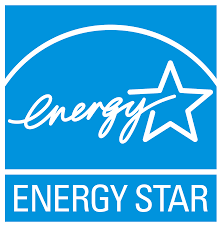
An air conditioning system comes with a set of ratings to describe its maximum energy efficiency performance: how effectively it takes its electrical power and converts it into cooling output. Air conditioners are becoming more efficient with each year as technology advances, and your current AC may be from an earlier era and consume more power than necessary.
In this post we’re going to guide you through how air conditioning efficiencies work. This can help you understand the efficiency of your air conditioner, or it may come in handy if you are looking to have a new AC installed this spring.
A word of caution: you will need professional air conditioning services in Conyers, GA if you make any changes to your AC setup. Only professional HVAC technicians can find the ideal new unit for you, and efficiency ratings aren’t the only criteria you need to know.
EER (Energy Efficiency Ratio)
There are two efficiency ratings on air conditioning systems. The first is EER, an acronym for energy efficiency ratio. EER is a ratio of the amount of cooling a unit puts out (measured in BTUs) to the amount of electricity used (measured in watt-hours) as tested under a specific set of conditions. To determine EER, an air conditioner is run over an hour with 95°F outdoor temperatures and relative humidity at 60%, providing a snapshot of the unit at work. The higher EER, the more efficient the unit.
SEER (Seasonal Energy Efficiency Ratio)
There’s only one letter of difference between EER and SEER because they’re almost the same. It’s still a ratio of BTUs to watt-hours, and the higher the number, the more efficient the unit. But that “S” is important, because SEER is not determined by a single test under one set of conditions. Instead, an air conditioner is run through a range of tests under different temperatures, humidity levels, and dew points to replicate a complete summer season of cooling. SEER provides an “average” performance overview, rather than the single snapshot of EER. SEER is always higher than EER for a given air conditioning system.
SEER and EER Standards
“So what’s a good SEER/EER number to look for?” you’re asking. We can answer that easily because the US Department of Energy has a set of criteria for an air conditioning unit to earn its ENERGY STAR label for efficiency. An air conditioner must have SEER/EER greater or equal to 15 SEER/12.5 EER to be given ENERGY STAR designation. We only recommend you look at ENERGY STAR-qualified air conditioning systems.
These Ratings Aren’t Everything
There are air conditioning systems with much higher SEER/EER, and these high-efficiency units can make a tremendous difference in the cost to cool a house. But they aren’t a guarantee, and when you’re looking for a new air conditioning system, making high SEER/EER your only criteria might end up causing trouble. A badly sized AC will waste money, no matter how high its efficiency rating. The rating is only the maximum performance of the unit—a badly chosen AC will still waste power. If you’re searching for a new air conditioner for your home, let our technicians provide the best assistance in making the choice.
Call Premier Heating & Air and Experience the Premier Difference!

